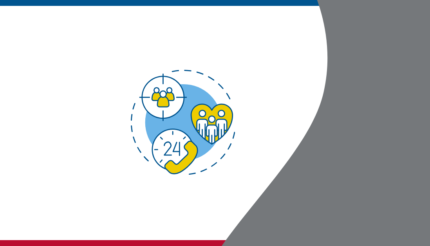
A successful business isn’t just about great products or smart strategies—it’s about people. More specifically, how well your team works together.
You can hire the best talent in the world, but if your team isn’t aligned, communicating well, or pulling in the same direction, things stall. Projects drag. Decisions get delayed. Profits drop.
On the flip side, a strong team dynamic can turn good businesses into great ones. It creates momentum, improves delivery, and builds a culture where people actually want to stay.
Why Teamwork Is a Profit Driver, Not Just a Culture Point
When teams communicate well, share ideas, and stay aligned on the goal, things move faster and smarter. There’s less conflict, fewer mistakes, and more creativity.
Look at Innocent Drinks – They built their culture around transparency and open communication. Every team member is encouraged to challenge ideas and contribute. This culture helped them scale their brand while keeping innovation and morale high.
Let’s unravel 5 Simple Principles that make teams work with a few examples of how top-performing UK businesses use collaborative intelligence to drive results and growth.
Key Principle #1. Build Psychological Safety First
If people are scared to speak up or make mistakes, they’ll hold back. That’s when innovation dies and frustration builds. Teams perform better when people feel safe to share honestly—without fear of being judged or shut down.
When people feel safe, they’re more likely to take initiative, solve problems, and support each other.
Key Principle #1 Case Study: OVO Energy
The Bristol-based energy company has made inclusion and openness a central part of its culture. OVO’s team structure encourages transparent conversations at all levels, which has helped the business grow rapidly while staying agile in a competitive market.

Key Principle #2. Clarify Roles and Shared Goals
When people don’t understand what’s expected—or how their work connects to the bigger picture—it leads to confusion and missed deadlines. Every team member should know exactly what they’re responsible for and how it impacts business goals.
Clarity reduces micromanagement, increases accountability, and helps everyone stay focused.
Key Principle #2 Case Study: ASOS
The fashion retailer improved team performance during a major rebrand by aligning departments with clearly defined KPIs and individual roles. This structure allowed them to meet tight launch deadlines while reducing internal friction across departments.

Key Principle #3. Embrace Diverse Thinking Styles
Teams aren’t meant to agree on everything. In fact, disagreement—when handled well—leads to better outcomes. The key is creating space for people with different strengths and perspectives to work together productively.
Thinkers, doers, creatives, and analysts all bring something valuable to the table—if they’re given the chance.
Key Principle #3 Case Study: The Body Shop UK
Their cross-functional innovation squads bring together people from different departments to develop new ideas. This collaboration helped them launch successful products and stay competitive in a crowded market.

Key Principle #4. Use Structured Collaboration Routines
Random meetings don’t create teamwork. The best teams have regular, focused touchpoints that are built into their way of working. These routines create rhythm, speed, and reduce friction.
Quick daily check-ins, weekly planning, and monthly reviews can make a huge difference.
Key Principle #4 Case Study: Moonpig Group
By adopting agile methods and structured team huddles, they improved speed to market and handled seasonal spikes without losing efficiency.

Key Principle #5. Share Fast, Honest Feedback
Feedback should be part of daily business—not just an annual review. The best teams give each other regular, helpful feedback to improve performance and stay on track.
When done right, feedback builds trust, confidence, and results.
Key Principle #5 Case Study: Octopus Energy
They run frequent feedback loops across teams, encouraging real-time learning. This helps them improve quickly and keep team morale strong—even during high-pressure times.

Quick Strategy Summary: How to Build a Better Team
- Create a safe space for honest conversations.
- Make sure every team member knows their role and goal.
- Let people work in their strengths—don’t force them into a box.
- Build simple routines that support daily collaboration.
- Use feedback to fix problems before they grow.
Want a Team That Grows With You—Not Against You?
If your team’s not aligned, your business will always feel harder than it should. Deadlines get missed, customers get frustrated, and you end up stuck firefighting instead of focusing on growth.
Let’s change that.
Take Action
I work with business owners who are ready to build stronger teams, improve culture, and unlock real performance. We’ll get under the bonnet of your current setup, identify the gaps, and put simple systems in place that make collaboration feel effortless.
“When every person is rowing in the same direction, results compound—quickly and consistently.”
Book your FREE Business Discovery Call today and let’s turn your team into your biggest advantage.
Our Events
We host monthly events as part of our Entrepreneurship Academy and 1-2-1 Business Coaching programmes. If you’d like to network with like-minded entrepreneurs and get a feel for what it would be like to be part of an awesome results-driven community, have a browse through our events page!
Attend an event for FREE and experience first-hand how ActionCOACH’s proven strategies and systems can help you grow. Whether it’s our half day Business Growth MasterCLASSes or a more in-depth quarterly 90 Day Planning Day event, we’d love to see you there!
Join an Event Here






